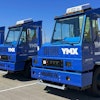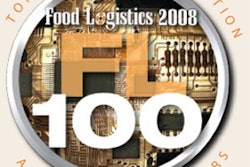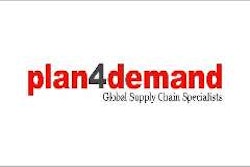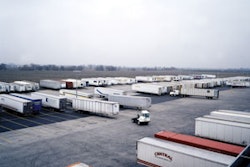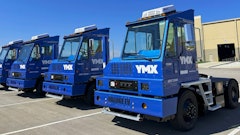
Some companies use fleet routing software in progressive stages and expand their operational capabilities over time. This is the case for Kuna FoodService, a food distributor to schools, churches, restaurants, fund raisers and many other organizations.
Kuna operates a fleet of 22 trucks delivering to customers in Missouri, Illinois, Kansas, Iowa and Oklahoma. Prior to purchasing a routing solution in 2000, trucks were routed by memorizing customer delivery windows, arranging order tickets by area and using primarily-static routes. While this process was daunting, it became even more challenging as new customers were added, order volumes fluctuated and routes needed to be updated prior to loading and dispatch.
Route schedules had to be coordinated to ensure that trucks arrived during acceptable delivery windows to both meet customer expectations and minimize the stop time at each location. Kuna evaluated the situation and believed it could improve fleet utilization, streamline deliveries and implement driver pay-for-performance with the proper tools in place. It knew that accurate delivery schedules and route costing were needed to transition to the performance-based program and to optimize fleet routing.
“We had always coordinated routes manually but there came a point when the daily routing became too large to effectively manage and we knew we could be more efficient with our fleet,” says John Schuler, general manager at Kuna FoodService, which is based in Dupo, IL.
The company decided to investigate automated fleet routing. Kuna chose Direct Route, from Appian Logistics Software Inc., Oklahoma City. Schuler says it chose Direct Route based on the ease of running the software as well as the cost vs. other packages.
Not wanting to take a chance on disrupting the business with too much change at once, the company decided to import existing routes into Direct Route to calculate accurate delivery schedules for the drivers. The system was also used to manage daily route updates based on the actual customer orders received.
“Before using Direct Route we would manually adjust routes in our back office system. However, we found there were significant advantages to using the system’s route mapping tools and viewing the updated times, remaining capacity, etc., as changes were made,” says Schuler.
The company used the delivery schedules from Direct Route in conjunction with an on-board system to track the actual time at each stop vs. the planned schedule. This allowed Kuna to review planned vs. actual unloading times and establish performance pay for drivers who exceeded the standard.
“Direct Route lets us incorporate the setup time and unload rate for each customer and generate accurate delivery schedules. We are able to compare the planned delivery times with actual times and provide bonuses based on performance,” says Schuler.
Once the pay-for-performance program was established, Kuna began to compare its static routes with dynamic routes generated by Direct Route and review cost-savings opportunities. The company realized that many customers had delivery appointments at the beginning of each day.
Appian’s system allowed Kuna to run what-if scenarios and see what savings were possible with different dispatch and delivery window parameters. During the first six months, the company continued to review opportunities and decided to incrementally transition to a more dynamic routing environment. To accomplish this, the company needed to establish acceptable and accurate delivery windows with its customers.
The sales and route management team met and laid out a plan for determining these time windows. Once the accurate windows were established, dynamic routes were phased in over a period of time by transitioning each geographic area individually. This approach allowed Kuna to control the change and take any lessons learned into the next region rather than changing all the areas at once.
Through this process, Kuna was able to eliminate 15 percent of its routes and generate a $4,000 savings per month while still meeting customer expectations.
MULTIPLE SCENARIOS
Once Kuna became comfortable with the dynamic routing process, it began to run multiple scenarios before releasing the routes to dispatch. Direct Route quickly creates optimal routes using various dispatch parameters and allows users to review total hours, miles, etc., for each scenario. This flexibility allows companies to review results under multiple sets of parameters and select the routes they would like to use.
“Each day we run multiple routing scenarios with Direct Route and choose the solution we want to send to the warehouse for that particular day,” says Schuler. With hundreds of customer delivery points, truck capacities and other business rules incorporated into the routing, this analysis would be extremely difficult using manual methods.
Multiple scenarios can be calculated and saved using this capability and clients are not locked into a particular routing scenario using a static set of parameters. Kuna uploads the finalized fleet routing from Direct Route to the back-office system for warehouse operations and daily dispatch. Truck loads and sequences are accessed for order picking and loading functions. Delivery volumes and unloading times are used to provide accurate schedules and order information.
Eight years after installation, Kuna continues to expand the use of Appian’s system. The company also uses Direct Route’s modeling and route-costing tools to bid new business, model future scenarios, and review fleet changes before decisions are made. Using order volume projections, incorporating drop-and-hook locations and evaluating different truck types are a few examples of this.
Kuna uses the system to calculate total delivery costs for the various scenarios and make financial decisions regarding the fleet operations. “Before we make an operational change, we use Direct Route to review the impact on fleet requirements and transportation costs,” says Schuler.


